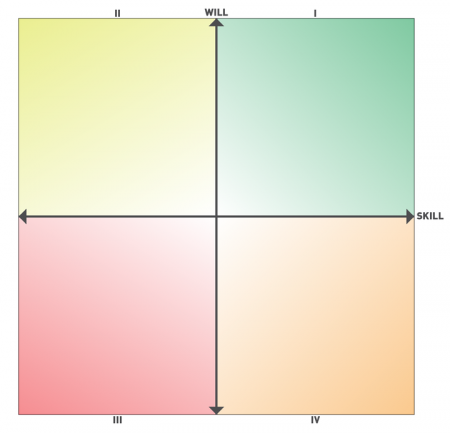This is part 1 of our “Skill vs. Will Sales Coaching” blog series. Read part 2 here, and part 3 is coming soon!
Of all the responsibilities that fall under your command as VP of Sales, which is numero uno for success? The task that has the single biggest impact on whether you achieve your goals?
Putting a great team in place.
Have you ever seen a Roman chariot race in a movie or on the history channel? Typically 2 to 4 horses pull chariots with seated drivers around a track. Winning isn’t so much about the brilliance of the driver as it is about the strength, speed and determination of the horses — even the greatest driver would struggle to compete if instead of guiding powerful stallions, he was stuck with a stable of ponies.
For the VP of Sales, it’s about getting the stallions. If your team isn’t up for the race, no amount of brilliant VP-ing will get you to the finish line in time. So, before you go crunching numbers and working on close rates or deal sizes, you need to know what you’re working with, and that starts with understanding the Skill vs. Will makeup of your team.
Skill vs. Will in Sales
The skill/will paradigm is top of mind for many sales leaders concerning their teams — understanding that success in sales relies on possessing the skill of knowing what to do and how to do it, coupled with a massive will to succeed and not necessarily in equal amounts. In a profession where the margin between winning and losing can be slim, what a person is made of really matters.
Between the two, lacking skill is easier to fix, simply because a person with massive willpower will put in the time and effort necessary to learn skills. On the flip-side, will comes from within, and as such is harder for you to affect. A sales manager on your team might have exceptional talent, but lacking willpower, will be an anchor on your efforts.
Knowing your team’s skill vs. will makeup will help in determining what actions to take in optimizing sales performance. One way to visualize it is as if each team member will fall somewhere on this matrix based on the levels of skill and will they possess (this is credited to Max Landsberg in “The Tao of Coaching”) :
The Skill vs. Will Sales Matrix
Calibrating Your Sales Matrix
As you can see, high-skilled, high-will salespeople land in the top right, and low-skilled, low-will people the bottom left. The points on the matrix will be relative to your purposes. For our purposes, you can generally consider the negative side of the axis to be lacking basic abilities and motivation, and the positive side to be black-belt level masters with the will to move mountains.
Now What?
In upcoming posts, we’ll talk about the characteristics of salespeople that fall into each quadrant, and more importantly, what to do with them on your team — whether that means ways to motivate and coach people into becoming Quadrant I champions, or finding a better fit for your needs. In the meantime, simply stopping to identify which of your team members falls into which quadrant can help you to understand your team in a new, valuable way.
*Special thanks to Chuck Loeher, VP of Sales at G/O Digital for inspiring this topic.






